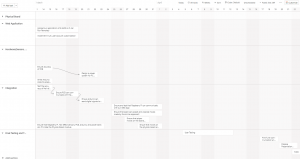Our most significant risk is our PCB fabrication process, as none of us have past experience, and we have been teaching ourselves ways to fabricate and debug our circuits. We have been able to make significant progress despite the delays in our orders, to have all our PCBs fabricated and tested, and ready to be integrated with the rest of our system, to ensure complete functionality.
Edison has been leading the PCB fabrication process, and has helped carry out individual tests on each row PCB as they’re fabricated, and also on all 8 of them. This has helped us understand the flaws in our soldering job and helped us fix these mistakes in future PCBs. Mukundh was able to run individual unit tests on all the software subsystems to ensure proper functionality and performance. He was also able to run some power tests on the button and speaker circuits to ensure there is no voltage issues when powering the PCBs, buttons, and speakers on the board. Apart from these technical tests, he was also able to test our board for accessibility and ease of use with our blind users and decided that we needed to increase the size of our braille annotations.
Finally, we decided to incorporate some design changes based on the research we did. We planned to move away from batteries and use just our RPi’s GPIO pins and the Arduino Uno to power our entire board. This resulted in a cheaper and more compact solution, resulting in no limit on the battery life. As mentioned in past reports, we did move away from 3D printing our board to instead just laser cutting it from wood, to reduce our costs. Lastly, we increased the size of our braille tiles to help our blind users be able to tell the difference.



